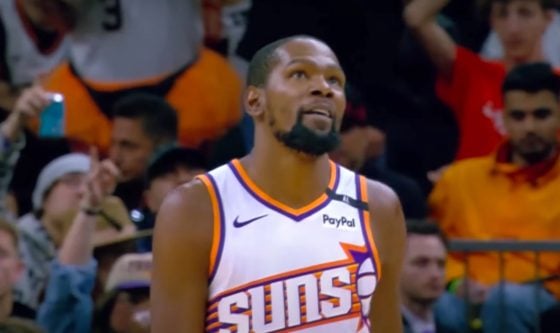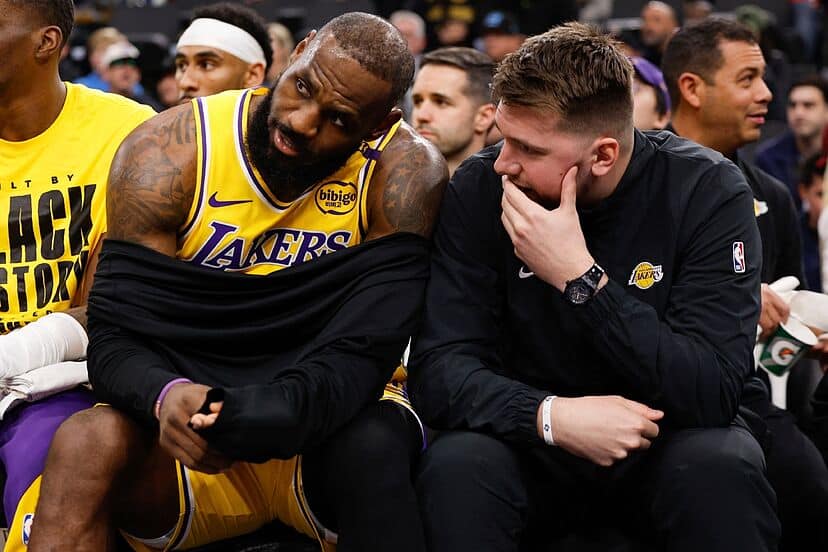We know the drill at this point. Boston wins one, then lose one, and the cycle continues over and over again. That’s been the way this post-season has gone since the second round, and it looks like it will continue to play out that way into The Finals.
Of course, it wouldn’t be Celtics basketball if they didn’t lose while turning the ball over, because you know, consistency and all that. But 18 turnovers is still too high for an NBA Finals game, especially if you’re giving up 33 points because of them — just shy of 1 point per turnover. Sure, it could have been worse, as this certainly wasn’t their worst performance in terms of taking care of the ball, but when you lose by 19, you start to wonder what might have been.
“It’s just kind of as simple as we’ve just got to take care of the ball. We’ve done it, and we’re a really good team when we take care of the ball. But we have those lapses where — snowball effect — we pile on turnovers and dig ourselves into a hole,” Tatum told the media following the Celtics’ 107-88 loss.
There are two primary types of turnovers in the NBA: forced and unforced, and of course, one is more egregious than the other. So, the question is, were Boston’s turnovers the result of increased intensity from the Golden State Warriors‘ defense, or did the Celtics make poor decisions with the rock?
Truthfully, the Warriors deserve credit for their defensive gameplan, and how they ensured it paid dividends. When watching the game for a second time, I noticed three major adjustments that seemed to stifle the Celtics and force them into unnecessary mistakes.
Pinching at the point of attack
A big part of the Warriors’ defense in Game 2 was to have their point of attack defenders pinch onto the ball-handler upon penetration. Steve Kerr knows his team has limited rim protection, so forcing early pick-ups, fumbles, or passes will always be better than collapsing once their opponent gets paint positioning.
The above clip shows how effective Golden State’s game plan projected to be, as Tatum comes off a stagger screen, tries to split the defense, and quickly finds himself getting stripped due to the Warriors’ pressure and activity on the perimeter. While this wasn’t the Celtics’ first turnover of the contest, it was indicative of how Boston would fail to adjust to the perimeter pressure Golden State was exerting.
Here’s another example of how the Warriors looked to send two towards the ball-handler as they penetrated, this time in transition. Steph Curry and Klay Thompson take away the driving lane for Marcus Smart, funneling him into their trap before getting the easy steal and getting out in transition themselves.
We’ve seen Miami have success by pinching in this manner before, most notable during the 2020 Eastern Conference Finals, so it’s certainly not the first time Boston has dealt with this brand of defense, although Miami did prefer to have their wings pinching rather than their guards.
“I mean, they definitely upped their pressure a little bit, closed out a little more aggressive to each of us. We’ve just got to make the play after that,” Derrick White said.
Adjusting pick-up points
Golden State didn’t just improve their defensive intensity though. They also adjusted their pick-up points, making sure the Celtics felt their pressure several feet above the three-point line. When you’re dealing with a defense that’s living in your space, it’s hard to generate a rhythm or execute your sets, and the Warriors feasted in these moments, using their disruptiveness to pilfer the rock as a player’s dribble loosened.
Even with Al Horford acting as the ball-handler, the Warriors send a defender to pick him up at the halfway line. When you’re faced with such aggressive man-to-man coverage, it often speeds you up and forced you to play at a frantic pace. Watching the above clip, we can see that Nemanja Bjelica creates the desired effect, as Horford uncharacteristically looks to spin off his man while operating at speed.
This possession combines both adjustments we’ve discussed so far. Jordan Poole is aiming to pick up Payton Pritchard around the logo, but a back screen from Daniel Theis takes him out of the play, allowing the sophomore guard to penetrate off the dribble.
However, Bjelica and Gary Payton II are both waiting on the high helpline, and instantly pinch in to swallow up any space Pritchard was looking to exploit. The additional pressure forces a fumble and the Warriors regain possession. This is how an aggressive brand of defense is supposed to operate, by chaining actions together to ensure there’s minimal drop-off in intensity throughout a possession.
“I think everybody played with more force. It wasn’t just me on Jaylen Brown. It was across the board. If I just pick up my force and no one else does, it doesn’t work. It’s a total team effort, guys being ready to help when help is needed and guys taking on the challenge at the point of attack. Yes, I wanted to come out and be more aggressive on that side, and I think I did a good job of that. But that’s a full team effort. It doesn’t just work because of one guy,” Draymond Green told the media following his controversial performance.
Pressuring Passing Lanes
Golden State has been one of the better teams in the league when it comes to deflections, especially in transition, and that speaks to their ability to clog passing lanes and force ill-advised decisions. We saw the Celtics fall into this trap on multiple occasions in Game 2.
In fact, by picking their man-up higher on the floor, the Warriors were also able to get under their man so that their positioning would clog the Celtics’ line of vision and give their active hands a high chance of deflecting the rock.
Take the above play for example. Tatum is so preoccupied with fighting through Draymond Green’s physicality that he’s unable to generate the correct amount of force for his pass, effectively gifting the ball to Steph Curry. Did Green get a piece of the ball as Tatum passed it? The camera angle doesn’t give too much away, but that would be a logical explanation as to what happened, and again speaks to the impact of their defensive alterations.
You can see a similar outcome on this possession, as Smart’s pass is quickly poked loose while attacking the paint, generating yet another turnover, and striking another hammer blow to the Celtics’ confidence in their ball-movement-based offense.
Heading into Game 3
It’s hard to say that Boston took Golden States’ best punch on Sunday, but they certainly got a taste of championship-level intensity and physicality. But, we’ve seen this Celtics team bounce back from losses throughout the post-season, and expecting them to wilt under the pressure doesn’t sit right.
Sure, the Warriors found ways to negate Boston’s offensive output and limit their ability to hunt mismatches on the offensive end, but playoff basketball is all about adjustments, and Steve Kerr simply did the job he’s paid to do. Now, it’s time for Udoka to implement a game plan that strikes back and spreads the Warriors’ defense out so that their pinching and high-pickups are nullified.
We’re in the early stages of a chess match, and so far, it’s been excellent on both sides.






